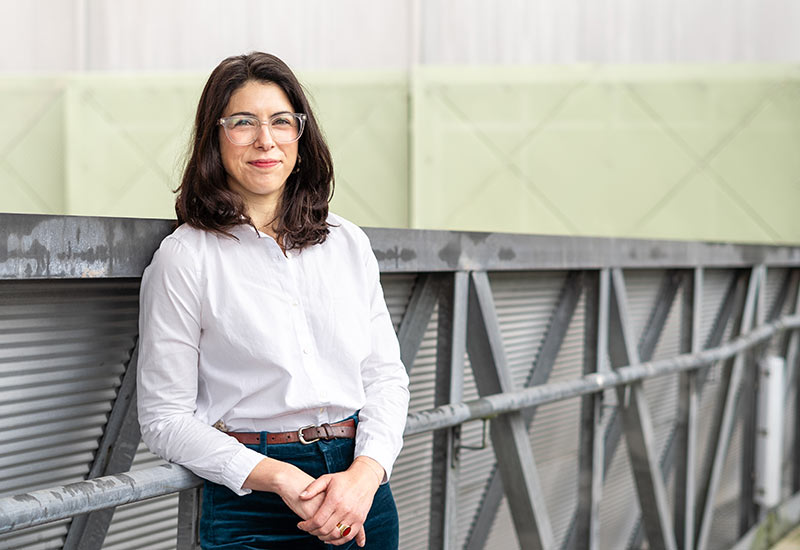Cerebrospinal fluid, strokes and saving lives through new therapies
Dr Kirsten Coupland
The brain is a vital yet vulnerable organ susceptible to injury, like traumatic brain injury (TBI) and strokes. By uncovering the untapped potential of cerebrospinal fluid in its healing, Dr Kirsten Coupland is providing fresh recovery hope.

Kirsten’s research focuses on understanding how cerebrospinal fluid—essentially, the fluid that surrounds and cushions your brain and spine—helps maintain brain health.
She’s particularly interested in how this fluid affects recovery after brain injuries like a stroke.
“We know that when the movement or composition of cerebrospinal fluid gets disrupted, it can worsen damage in the brain,” Kirsten explains.
“However, we still don’t fully understand how it moves or how it changes after brain injury. By studying this, I hope to develop new therapies that protect the brain and improve recovery outcomes for patients.”
Motivated by a stroke in the family
According to new data from the Stroke Foundation, the number of Australians having strokes is the greatest it has been in more than two decades. In 2023, 45,785 of us experienced a stroke, equating to one stroke every 11 minutes.
These numbers make finding new, effective stroke treatments more crucial than ever—from both a public health and economic perspective. However, Kirsten’s interest in stroke research is also driven by a personal experience with this often debilitating medical emergency.
“When I was younger, my mother had a stroke due to a ruptured aneurysm, and it was initially misdiagnosed as meningitis”, shares Kirsten.
“Thankfully, she recovered, but this experience drove me to explore how we can better diagnose and treat strokes.”
Kirsten also shares that beyond this, she’s always been fascinated by the brain and that joining a world-class stroke research team at the University of Newcastle has allowed her to turn that passion into action.
Researching hypothermic therapies
One of the key challenges Kirsten and her team are addressing in their research is how to use hypothermia (cooling the body) to protect the brain after a stroke.
This exciting work is being done in collaboration with Neuro-Electronics Research Flanders (NERF) and KU Leuven in Belgium. It’s a partnership that combines cutting-edge imaging technology with an innovative approach to stroke treatment.
What they’ve discovered is that after some strokes, there is an increase in pressure inside the skull that occurs independent of brain swelling. This increase in pressure appears to alter blood flow to stroke-affected tissue causing further damage. The team’s research indicates that reduced outflow of cerebrospinal fluid from the central nervous system may be a key contributor to this pressure increase. Hypothermia can prevent this pressure buildup and reduce brain damage.
However, Kirsten shares that cooling the body in a hospital setting is complicated. Because of this, they’re investigating ways to induce hypothermia using medications instead of physical cooling.
The ultimate goal is to make this therapy more accessible and effective for patients. They’re hopeful these new therapies will save lives and improve recovery outcomes for stroke patients.
Trialling cerebrospinal fluid removal
Kirsten has also recently started a clinical trial in collaboration with Commonwealth Serum Laboratories (CSL) to test whether removing some cerebrospinal fluid from stroke patients can lower pressure inside the skull and lead to better outcomes.
CSL is a global pharmaceutical company based in Australia, known for developing life-saving medicines and therapies.
If their theory proves correct, it could revolutionise stroke care and lead to further new treatments that improve recovery for many patients.
From results to market treatments
Being able to turn promising lab results into practical treatments for patients is a major barrier Kirsten faces in her research.
To overcome this, she shares that they rely on their network of collaborators, including clinicians, researchers and industry experts.
“I work closely with Professor Neil Spratt at the John Hunter Hospital, who is deeply involved in treating stroke patients and leading clinical trials. Collaborating with CSL also enables me to explore viable ways to bring new treatments to market.”
Additionally, she partners with researchers like Associate Professor Renee Turner at the University of Adelaide, who uses advanced models to test therapies that closely mimic human stroke conditions.
Finding hope in cerebrospinal fluid
Kirsten shares that she’s continually amazed by how much there is still to learn about cerebrospinal fluid and its role in brain health.
“For years, it was thought to serve mainly as a cushion for the brain, but we now know it does so much more—like removing waste and keeping the brain environment stable. In stroke research, this opens up a whole new area for developing therapies.”
She’s excited by the potential to make a real difference for stroke patients through this previously overlooked system. She can’t wait to see what they discover next.
The University of Newcastle acknowledges the traditional custodians of the lands within our footprint areas: Awabakal, Darkinjung, Biripai, Worimi, Wonnarua, and Eora Nations. We also pay respect to the wisdom of our Elders past and present.
